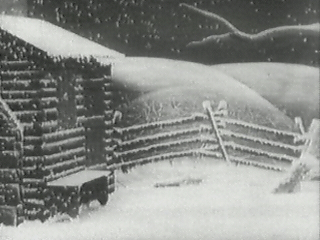
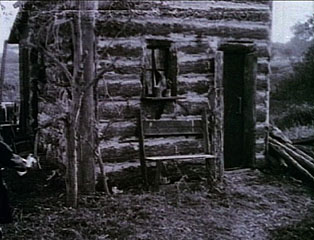
 |
 |
| There are many connections between Stowe's hugely popular
and deeply controversial 19th century novel and The Birth of a Nation,
Griffth's hugely popular and deeply controversial 1915 film. The film is an adaptation of Thomas Dixon's novel The Clansman (1905), second volume in the "Clan Trilogy" that, according to Dixon, began growing in his imagination while he was watching a theatrical performance of Uncle Tom's Cabin. The Leopard's Spots, the first novel he wrote, even contains several characters from Stowe's novel -- see DIXON HOMEPAGE. Like Dixon, D. W. Griffith was a Southerner who wanted to revise Stowe's depiction of slavery and race. The most resonant evocation of her story in his film, as Linda Williams has noted,* is the cabin that serves as the scene of the movie's ultimate dramatic climax. Consciously or not, contemporary movie-goers could not have missed the physical resemblance between Griffith's cabin and the popular representation of Tom's (see pictures above), a similarity that is only partially explained by the fact, as Griffith's assistant cameraman later said, that nearly all the workers on the film's set construction crew had previously worked for Tom Shows.* When Griffith's camera takes us inside the cabin, it reveals many of the same elements that Stowe used to make her readers feel at home in a slave's cabin -- children and cooking, for example (below). |
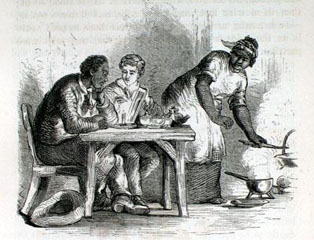 |
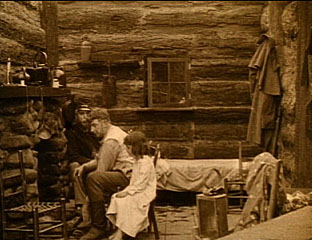 |
|
What Griffith's cabin symbolizes, on the other hand, deliberately
inverts most of Stowe's meanings. The slaves whom she sought to depict
sympathetically as victims become, as emancipated blacks in the film's second
half, the evil
force that threatens families and women and children. In the film the victim is
the Southern (former) slave owner, who must now unite with former Union
soldiers to fight against a common racial enemy When the Ku Klux Klan
comes to the rescue, the re-united white America is purged of the black
Other, and the cabin that had once divided North and South now becomes the
specific place at which this new "Aryan" nation is born. Birth of a Nation provoked protests from groups like the recently-formed NAACP, and was banned in a few cities, but it was critically hailed as a work of genius, as the greatest, most innovative movie ever, and it also quickly became the single most financially successful silent film of all time. You can see what those audiences saw for yourself in the three clips below. To 21st century audiences it will probably seem hateful as well as artful. Its depictions of the black mob threatening the cabin and the white-robed KKK redeeming it are brutally racist. But like Stowe, the film insists that the story it tells was historically true. Given its use of Uncle Tom's cabin and its impact on American culture, the film unquestionably belongs in the archive. |
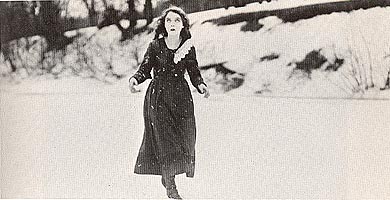 Anna (Lilian Gish) wanders onto the icy river |
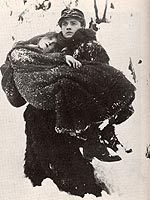 She is rescued by David (Richard Barthelmess) |
